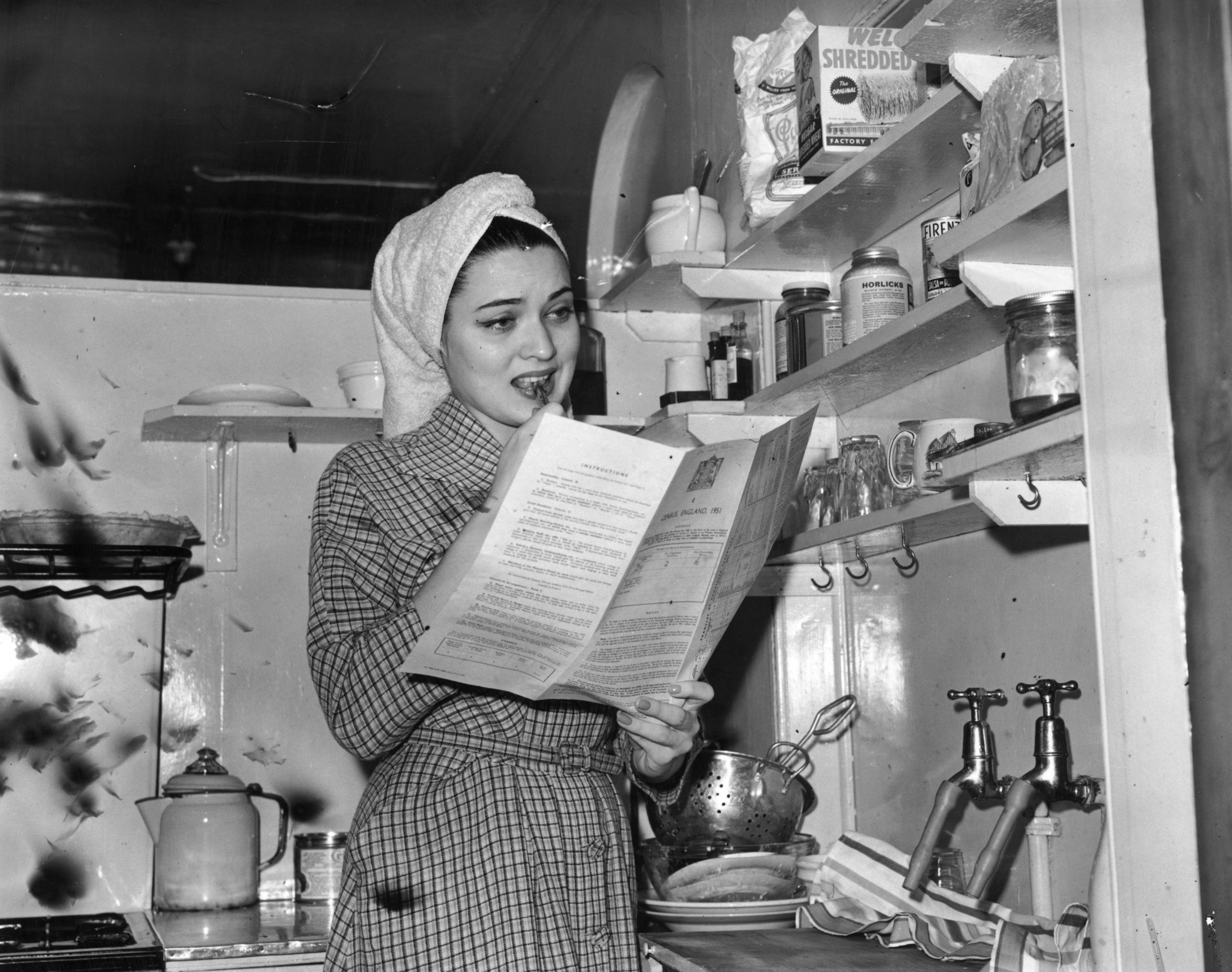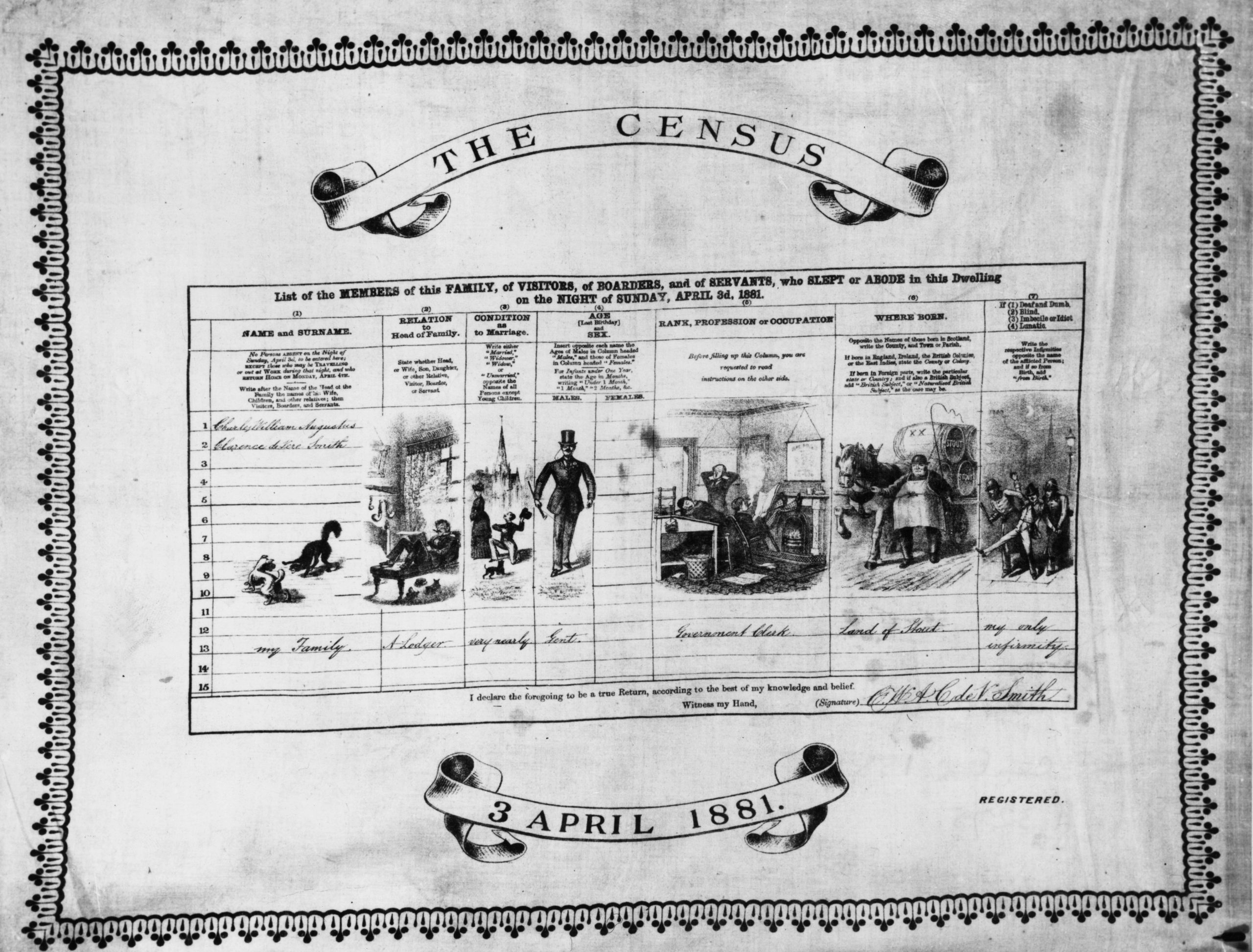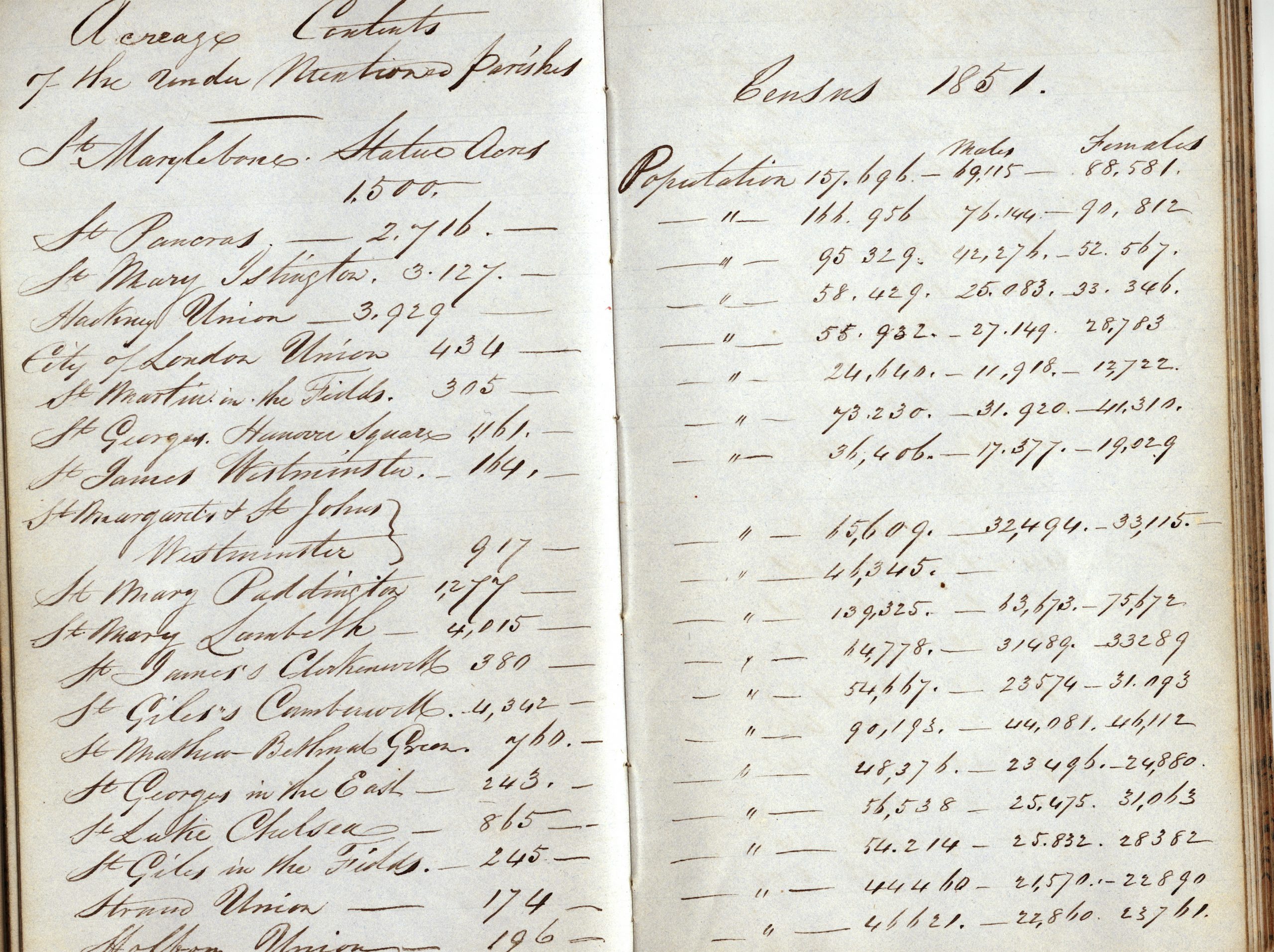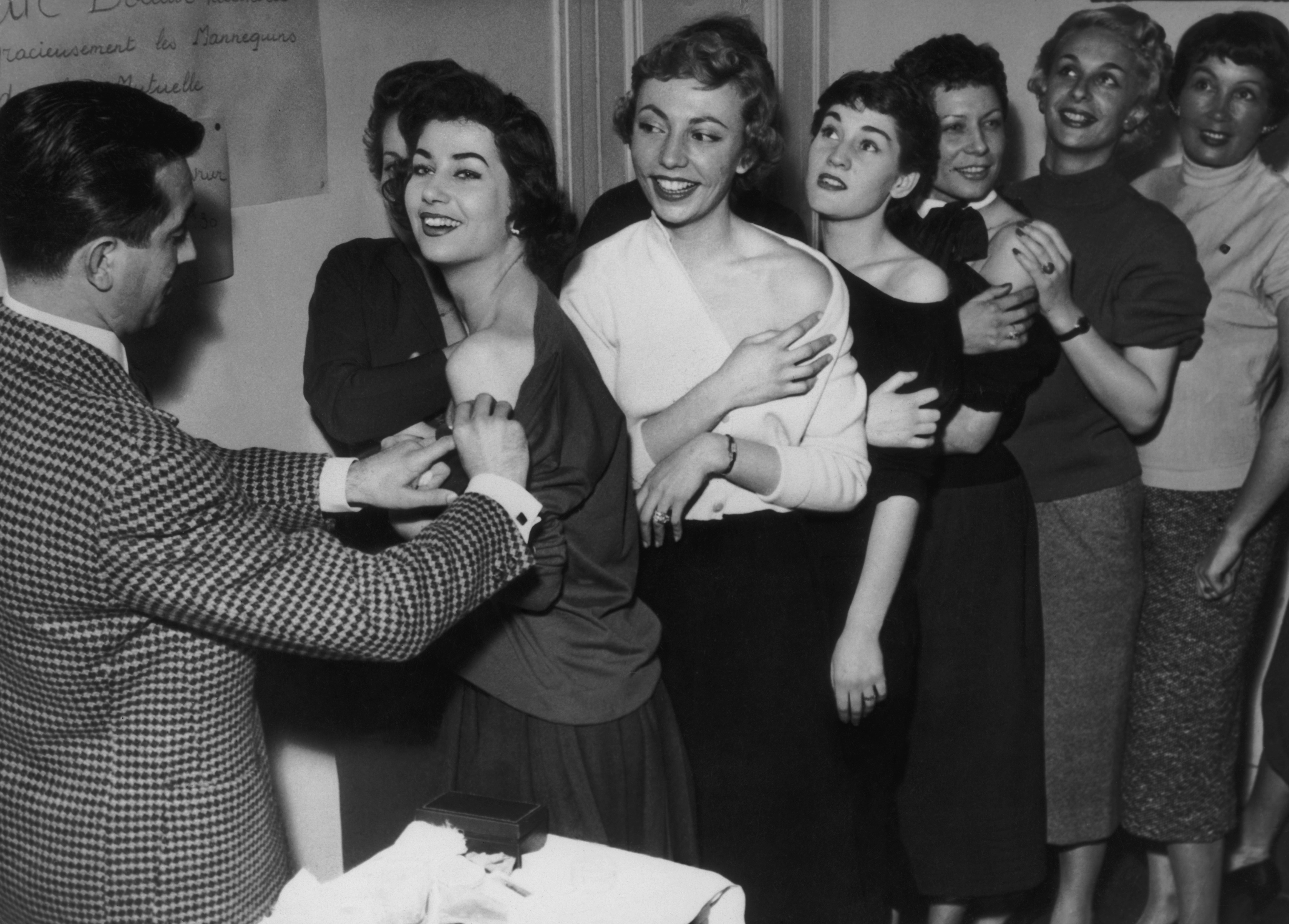Curious Question: When was the first census held?
As the UK prepares to compile this decade's census, Martin Fone retraces its history.


On Sunday, March 21st, all residents in England and Wales will be legally obliged, under the amended Census Act of 1920, to complete a census form for the Office for National Statistics or face a fine of up to £1,000. Northern Ireland will hold its own census at the same time, but the Scots have deferred theirs until 2022. A decennial event, it provides an invaluable snapshot of the nation on that day and a treasure trove for future generations of social historians and genealogists.
The idea of taking stock in a formalised way is nothing new, with the Babylonians undertaking a detailed audit of head of livestock and quantities of produce such as butter, honey, milk, wool, and vegetables over five thousand years ago.
The earliest census where information has survived was carried out in China, by the Han Dynasty in AD2. It revealed a population of 57.7 million, living in 12.4 million households.
In England, William the Conqueror surveyed landowners and their holdings to inform a new taxation system, an exercise which resulted in the Domesday Book of 1086. Edward I repeated it in March 1279, producing the Hundred Rolls, the data being arranged by administrative areas known as hundreds.
As the 18th century grew to a close, the Pitt Administration was increasingly concerned that the French under Napoleon Bonaparte might attempt to invade the country or that England would be called upon to assist its continental allies to halt their advance. One significant hole in Pitt’s armoury was that he had no clear view of the size of the English population, let alone how many were of an age to be drafted into the army or navy if necessary. It made detailed planning nigh on impossible.

The government’s dilemma was compounded by a disagreement as to whether the population was increasing or decreasing. Thomas Malthus believed that the population was growing at such a rate that it would soon become unsustainable.
Others, with a more practical statistical bent, compared the birth records with the death records of the parishes within London. They discovered that far more people were dying in the metropolis than were born and, extracting from the empirical data, concluded that the country’s population was plummeting. Unfortunately, they had overlooked the fact that many who were born elsewhere came to the capital in search of streets paved with gold, only to meet their Maker around the corner.
Exquisite houses, the beauty of Nature, and how to get the most from your life, straight to your inbox.
Often, it takes a moment of inspiration or a statement of the bleedin’ obvious to cut through such a Gordian knot. John Rickman, the editor of The Commercial, Agricultural and Manufacturers Magazine, published an article in the journal in June 1800, suggesting that the answer to the conundrum was to count the population. The idea found favour in government, the necessary legislation was passed and Rickman was given the responsibility of overseeing the work.
The first census of England and Wales was held on March 10, 1801, a Tuesday, and the results were laid before Parliament on December 31st that year, twelve months to the day after the passing of the enabling legislation. Data was collected on households rather than individuals, but the results allowed Rickman to calculate that the population of England and Wales was around 9.4 million, if the estimated numbers of military personnel, seamen and convicts were added to the census return of 8.87 million.
Rickman was responsible for the next three censuses, held at ten-yearly intervals, with census day moving to the last Monday in May. As with the initial census, in recognition of the low levels of literacy among the population, data was collected by leading members of the parishes and overseers of the poor en masse rather than through individual forms.

Reliance upon local worthies meant that sometimes their prejudices would come to the fore. The Very Reverend Dr Peter Scrimshire Wood, minister of Middleton in Norfolk, registered a butcher as a ‘cut-throat of pigs’, a greengrocer as a ‘cabbage gelder’ and a mother of illegitimate children as ‘whore and man trap’.
Rickman died in 1840 and responsibility for the 1841 census passed to Thomas Henry Lister, who was appointed the first Registrar General for his troubles. Held on June 6, 1841, a Sunday, it is widely viewed as being the first modern census, deploying around 35,000 male enumerators, pencils at the ready, to distribute forms individually to households and collect them again.
Householders were required to complete them themselves, a trial for many as literacy rates were still low. It was the first census to list every member of a household and, in a surprisingly inclusive touch, questionnaires were even translated into Welsh. Even so, the complete set of returns for Wrexham went missing, only to turn up later in a bookshop.
The 1841 census showed that the population had risen to a shade under 16 million. To the modern eye, what is fascinating is the range of jobs that people held. There were 571 fork-makers, 74 leech bleeders, twenty peg makers, nine artificial eye-makers, five ice dealers and one solitary man who owned up to being a bee dealer. There were only 734 midwives, showing that expectant mothers were still largely dependent upon their womenfolk for support. Two firsts marked the census of 1911; information was encoded and sorted using punch cards, while the form completed by the householder was held in the archive records, allowing researchers to see their handwriting. Emily Davison, a suffragette who had hidden in a broom cupboard in the House of Commons, was duly recorded as being a resident there, while the true identity of a Persian mouser called Peter Tabby was rumbled, an enumerator using red ink to cross out the entry, adding ‘this is a cat’. Other suffragettes recorded their profession as ‘slave’.

After the First World War, the census hit choppier waters. The holding of the 1921 census, originally scheduled for April 24th, was delayed until June 19th, due to industrial unrest, the only time the date has been changed. It showed a marked drop in the male population and a significant increase in the number of widows.
For obvious reasons, the 1941 census was not held and the records for the 1931 census were destroyed by fire in December 1942. To improve understanding of how to participate in the census and complete the forms, new technology was deployed in 1931 in the form of a series of six weekly radio broadcasts entitled ‘Numbering the People’. Although a change in legislation in the 1930s allowed censuses to be held every five years, this was never adopted.
The census for 1951, the first for two decades, showed that the population had topped the 50 million mark for the first time. A different first was marked in 1961 when a computer was used to analyse the results. It still took 5.5 years to complete the job. I anticipate the results of this year’s census will be disclosed more quickly and may even match the speed of John Rickman’s initial analysis. Without doubt they will reveal yet more fascinating insights into the state of the nation.

Credit: Alamy
Curious Questions: How wise are owls?
The age-old image of the intelligent owl has persisted for centuries — but are they really the intellectuals of the

Curious questions: Who administered the first vaccination?
If you thought it was Edward Jenner, think again: Martin Fone discovers that the practice of inoculating against the smallpox
After graduating in Classics from Trinity College Cambridge and a 38 year career in the financial services sector in the City of London, Martin Fone started blogging and writing on a freelance basis as he slipped into retirement. He has developed a fearless passion for investigating the quirks and oddities of life and discovering the answers to questions most of us never even think to ask. A voracious reader, a keen but distinctly amateur gardener, and a gin enthusiast, Martin lives with his wife in Surrey. He has written five books, the latest of which is More Curious Questions.
